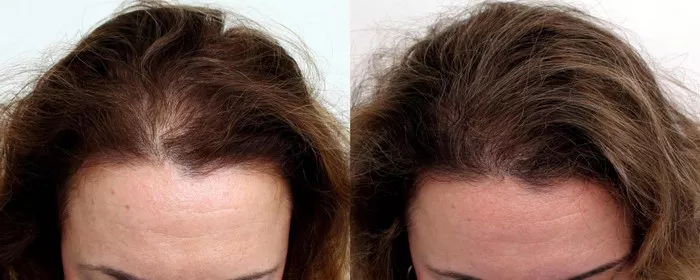Undergoing a hair transplant is a significant step towards regaining your confidence and achieving a fuller head of hair. While the results can be transformative, it’s crucial to understand the timeline and factors that influence the recovery process. In this article, we will explore the intricacies of hair transplant recovery, providing a comprehensive guide for those considering this procedure. Let’s delve into how long the recovery typically takes after a hair transplant.
Understanding the Hair Transplant Procedure
Before we delve into the recovery timeline, it’s essential to understand what happens during a hair transplant.
a. Follicular Unit Transplantation (FUT) vs. Follicular Unit Extraction (FUE)
Hair transplants come in various techniques, with Follicular Unit Transplantation (FUT) and Follicular Unit Extraction (FUE) being the most common. The recovery timeline may vary slightly depending on the method chosen.
b. The Transplant Process
Hair transplant involves the extraction of hair follicles from a donor area and their transplantation to the recipient area, typically the scalp. The precision and care exercised during this procedure affect the recovery duration.
Immediate Post-Operative Period
The immediate period following a hair transplant is crucial for successful recovery.
a. Immediate Recovery Phase
After the surgery, patients are monitored, and the donor and recipient areas are cared for. Dressings and bandages are applied to protect the grafts.
b. First 24-48 Hours
During the first 24-48 hours, it’s common to experience mild swelling, redness, and discomfort. These are normal and subside quickly.
c. Instructions for Post-Operative Care
Surgeons provide detailed instructions for post-operative care, including how to wash and care for the transplanted area.
First Week After the Transplant
The first week following the hair transplant is a critical phase in the recovery process.
a. Scabbing and Crusting
Scabbing and crusting may develop around the transplanted grafts. It’s important not to pick at them to avoid damaging the grafts.
b. Shedding
A phenomenon called “shock loss” may occur during this time. Some transplanted hairs may fall out, but this is temporary and part of the natural hair growth cycle.
c. Resuming Normal Activities
Many patients can resume their normal daily activities within a few days, but strenuous exercise should be avoided during the first week.
Two to Four Weeks After the Transplant
The second to fourth weeks post-transplant are typically a time of transition in the recovery process.
a. Grafts Start to Take Root
During this period, the transplanted grafts start to take root in the recipient area. New hair growth may begin to emerge.
b. Swelling and Redness Subside
Swelling and redness continue to decrease, and the scalp gradually returns to its normal appearance.
Months 2 to 6: The Growth Phase
The true results of a hair transplant start becoming visible during this phase.
a. Growing New Hair
New hair growth becomes more evident, and the overall density of the hair improves.
b. Final Results
The final results of the hair transplant can take up to a year or more to fully manifest, but patients typically see significant improvement by month six.
Factors Influencing Recovery Duration
The recovery duration after a hair transplant can vary from person to person and may be influenced by several factors.
a. Individual Healing
Each person’s healing process is unique, so recovery times can differ. Those with good overall health often experience quicker recovery.
b. Surgical Technique
The chosen surgical technique and the skill of the surgeon can impact recovery time.
c. Post-Operative Care
Strictly following post-operative care instructions is crucial for a smooth and timely recovery.
d. Donor Area Health
The health of the donor area, from which the hair follicles were extracted, plays a role in the recovery duration.
e. Nutrition and Lifestyle
A balanced diet and a healthy lifestyle can support the body’s healing processes, potentially shortening the recovery period.
See Also: How Much Time Does Hair Transplant Lasts: A Comprehensive Guide
In conclusion
The recovery timeline for a hair transplant is a gradual process that unfolds over several months. While the immediate post-operative period may involve some discomfort and temporary effects, such as scabbing and shock loss, patients can typically resume their daily routines within a week. The visible results become increasingly apparent from months two to six, with the final outcome taking a year or more. Individual factors, surgical technique, post-operative care, and lifestyle all play a role in determining the duration of the recovery. Remember that consulting with your surgeon and adhering to their guidance is crucial for a successful and timely recovery after a hair transplant.


